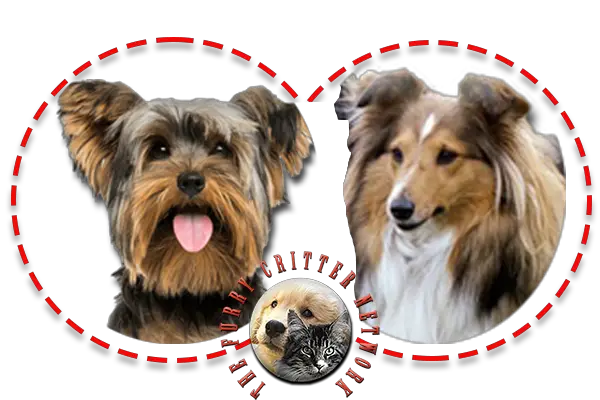Behavior
The Shetland Sheepdog is loyal, willing and eager to please, making a wonderful companion dog. Docile and alert with a pleasant temperament. Loving, loyal and affectionate with its family, this breed needs people. Socialize it well starting at puppyhood. It is a good guard and watchdog. Sensitive to the tone of your voice, these dogs will not listen if they sense you do not mean what you say, and will also not listen if you are too harsh. They need their owners to be calm, but firm.
Very intelligent, lively and trainable, the Shetland Sheepdog is one of the smartest breeds. Shelties have such a high level of intelligence according to Dr. Stanley Coren, an expert on animal intelligence, the Shetland Sheepdog is one of the brightest dogs, ranking 6th out of 138 breeds tested. His research found that an average Sheltie could understand a new command in fewer than five repetitions and would obey a command the first time it was given 95% of the time or better.With intelligence comes the need to occupy their minds. They like to be kept busy. The Sheltie is above all an intelligent herder, capable both of commanding large cattle and holding small sheep in check. The herding instinct is still very strong in many of them.
They can become suspicious with strangers, especially with children. They may not allow themselves to be touched by strangers and will display noisy persistent barking, as they tell the humans to leave them alone. This can lead to guarding, snapping and even biting.
Brushing two times per week is required, more often during periods of seasonal shedding. Do not bathe this breed more than once per month. Daily walks are necessary.
Health
For the most part, Shelties are athletic and healthy. Like the Rough Collie, there is a tendency toward inherited malformation and disease of the eyes. Each individual puppy should have its eyes examined by a qualified veterinary ophthalmologist. Some lines may be susceptible to hypothyroidism, epilepsy, hip dysplasia, or skin allergies.
Shetland Sheepdogs have four times the risk of other dogs of developing transitional cell carcinoma, a cancer of the bladder.
Dermatomyositis may occur at the age of 4 to 6 months, and is frequently misdiagnosed by general practice veterinarians as sarcoptic or demodectic mange. The disease manifests itself as alopecia on the top of the head, supra- and suborbital area and forearms as well as the tip of the tail. If the disease progresses to its more damaging form, it could affect the autonomic nervous system and the dog may have to be euthanised. This disease is genetically transmitted and recessive, with breeders having no clear methodology for screening except clear bloodline records. Deep tissue biopsies are required to definitively diagnose dermatomyositis. Lay assessment of end-stage dermatomyositis is observed difficulty or inability to swallow, even water.
Von Willebrand disease is an inherited bleeding disorder. In Shelties, affected dogs as a general rule are not viable and do not live long. The Sheltie carries type III of von Willebrands, which is the most severe of the three levels. There are DNA tests that were developed to find von Willebrands in Shelties. It can be done at any age, and it will give three results: affected, carrier or non-affected.
Although small breed dogs do not usually suffer unduly from hip dysplasia, it has been identified in Shelties. Hip dysplasia occurs when the head of the femur and the acetabulum do not fit together correctly, frequently causing pain or lameness. Hip dysplasia is thought to be genetic. Many breeders will have their dogs' hips x-rayed and certified by the Orthopedic Foundation for Animals.
Eyes: The two basic forms of inherited eye diseases/defects in Shelties are Collie eye anomaly (CEA) and progressive retinal atrophy (PRA).
Collie eye anomaly: An autosomal recessive inherited trait which results in incomplete closure of the embryonic fissure; seen almost exclusively in Collies, Border Collies and Shetland Sheepdogs. CEA can be detected in young puppies by a veterinary ophthalmologist. The disease involves the retina. It is always bilateral although the severity may be disparate (unequal) between eyes. Other accompanying defects (ophthalmic anomalies) may wrongly indicate a more severe manifestation of CEA. CEA is present at birth and although it cannot be cured, it doesn't progress. Signs of CEA in shelties are small, or deepset eyes. That is, the severity of the disease at birth will not change throughout the dog's life. CEA is scored similar to the way hips are.
CEA is genetic, inheritance is autosomal recessive, this means that even a dog that shows no phenotypic signs of the condition may be a carrier. Breeders should actively try to breed this disease out by only breeding with dogs that have "clear" eyes or very low scoring eyes. A CEA score considered too high to breed with may still be low enough not to affect the dog's life. These dogs live happy and healthy lives as pets but should be not used for breeding. The recent development of a DNA test for CEA makes control of this disease much more likely as more breeders take advantage of the test.
PRA can be detected at any time but usually does not show up until the dog is around two years old. Breeding dogs should be tested for genotype for this condition before breeding and only animals found "clear" should be used for breeding. PRA can occur in most breeds of dog including mix breeds. In most breeds it is also an autosomal recessive condition, however it has been found in other breeds to be autosomal dominant and sex-linked in others. As the name suggests, it is a progressive disease which will eventually result in total blindness. Like CEA, an affected dog should not be bred with but these dogs can live happily as pets. Currently there is no treatment for either disease, but as both diseases (CEA and PRA) are hereditary it is possible to eliminate them using selective breeding.






